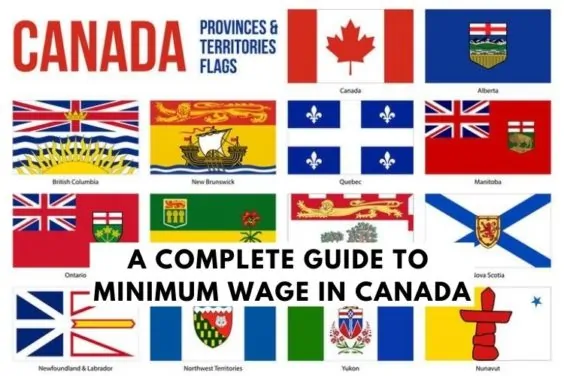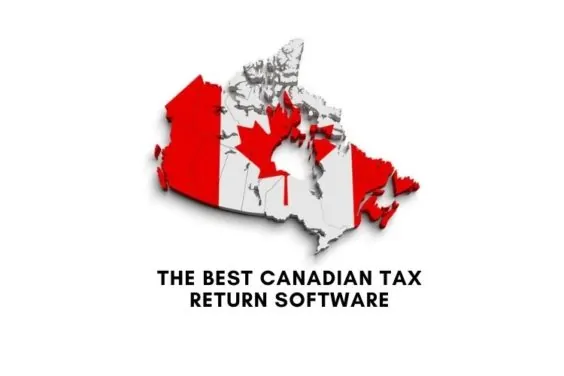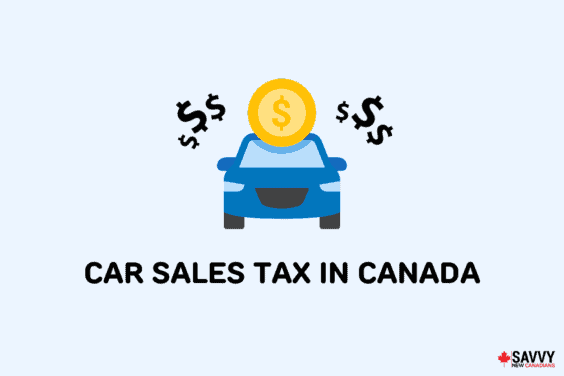In reference to a popular quote credited to Benjamin Franklin, there are only a few other things in life that are as certain as death and taxes.
Every year, residents of Canada are required to pay taxes on their worldwide income and file an income tax and benefits return. You pay income taxes to both federal and provincial governments when you have earned more than the minimum “tax-free” personal amounts.
Canada utilizes a graduated income tax system, meaning that the more money you earn, the higher your taxes.
The federal tax brackets are calculated yearly based on an inflation factor tied to the Consumer Price Index. For 2023, the inflation or indexation rate was 6.3% (i.e. the indexation factor is 1.063). For 2024, the indexation rate is 4.7% (i.e. a factor of 1.047).
Most provinces utilize a similar inflation factor for calculating provincial income tax brackets, although their rate may be based on the provincial inflation rate.

2023-2024 Federal Tax Bracket Rates
The federal personal income tax rates and brackets refer to taxes payable on your taxable income, which is your gross income minus deductions, tax credits, and other adjustments.
The federal income tax rates and brackets for 2023 and 2024 are:
| Tax Bracket 2024 | Tax Rate 2024 | Tax Bracket 2023 | Tax Rate 2023 |
|---|---|---|---|
| Up to $55,867 | 15% | Up to $53,359 | 15% |
| $55,868 to $111,733 | 20.50% | $53,360 to $106,717 | 20.50% |
| $111,734 to $173,205 | 26% | $106,718 to $165,430 | 26% |
| $173,206 to $246,752 | 29% | $165,431 to $235,675 | 29% |
| $246,753 and over | 33% | $235,676 and over | 33% |
Provincial Tax Brackets and Rates for 2023 and 2024
The different provinces and territories in Canada also collect income taxes that are payable along with your federal return.
Quebec collects its provincial income taxes directly via Agence du Revenu du Quebec.
The provincial tax rates and brackets for 2023 and 2024 are below.
Ontario Tax Brackets 2023-2024
| ON Tax Bracket 2024 | Tax Rate 2024 | ON Tax Bracket 2023 | Tax Rate 2023 |
|---|---|---|---|
| Up to $51,446 | 5.05% | Up to $49,231 | 5.05% |
| $51,447 to $102,894 | 9.15% | $49,232 to $98,463 | 9.15% |
| $102,895 to $150,000 | 11.16% | $98,464 to $150,000 | 11.16% |
| $150,001 to $220,000 | 12.16% | $150,001 to $220,000 | 12.16% |
| $220,001 and over | 13.16% | $220,001 and over | 13.16% |
The indexation factor in use in Ontario is 1.045 for 2024 (except for the last two income bracket rates, which are not indexed). Ontario has a surtax that is further levied on your provincial income tax, subject to certain thresholds.
Alberta Tax Brackets 2023-2024
| AB Tax Bracket 2024 | Tax Rate 2024 | AB Tax Bracket 2023 | Tax Rate 2023 |
|---|---|---|---|
| Up to $148,269 | 10% | Up to $142,292 | 10% |
| $148,270 to $177,922 | 12% | $142,293 to $170,751 | 12% |
| $177,923 to $237,230 | 13% | $170,752 to $227,668 | 13% |
| $237,231 to $355,845 | 14% | $227,669 to $341,502 | 14% |
| $355,846 and over | 15% | $341,503 and over | 15% |
Alberta’s tax brackets were indexed using a factor of 1.042 in 2024.
British Columbia Tax Brackets 2023-2024
| B.C. Tax Bracket 2024 | Tax Rate 2024 | B.C. Tax Bracket 2023 | Tax Rate 2023 |
|---|---|---|---|
| Up to $47,937 | 5.06% | Up to $45,654 | 5.06% |
| $47,938 to $95,875 | 7.70% | $45,655 to $91,310 | 7.70% |
| $95,876 to $110,076 | 10.50% | $91,311 to $104,835 | 10.50% |
| $110,077 to $133,664 | 12.29% | $104,836 to $127,299 | 12.29% |
| $133,665 to $181,232 | 14.70% | $127,300 to $172,602 | 14.70% |
| $181,233 to $252,752 | 16.80% | $172,603 to $240,716 | 16.80% |
| $252,752 and over | 20.5% | $240,717 and over | 20.5% |
The indexation factor used to compute B.C.’s tax brackets is 1.05 for 2024.
Manitoba Tax Brackets 2023-2024
| MB Tax Bracket 2024 | Tax Rate 2024 | MB Tax Bracket 2023 | Tax Rate 2023 |
|---|---|---|---|
| Up to $47,000 | 10.80% | Up to $36,842 | 10.80% |
| $47,001 to $100,000 | 12.75% | $36,843 to $79,625 | 12.75% |
| $100,001 and over | 17.40% | $79,626 and over | 17.40% |
Manitoba’s indexation factor for tax brackets is 1.052 for 2024.
Saskatchewan Tax Bracket 2023-2024
| SK Tax Bracket 2024 | Tax Rate 2024 | SK Tax Bracket 2023 | Tax Rate 2023 |
|---|---|---|---|
| Up to $52,057 | 10.50% | Up to $49,720 | 10.50% |
| $52,058 to $148,734 | 12.50% | $49,721 to $142,058 | 12.50% |
| $148,735 and over | 14.50% | $142,059 and over | 14.50% |
Saskatchewan has an indexation factor of 1.047 for 2024.
New Brunswick Tax Brackets 2023-2024
| NB Tax Brackets 2024 | Tax Rate 2024 | NB Tax Brackets 2023 | NB Tax Rate 2023 |
|---|---|---|---|
| Up to $49,958 | 9.40% | Up to $47,715 | 9.40% |
| $49,959 to $99,916 | 14.00% | $47,716 to $95,431 | 14.00% |
| $99,917 to $185,064 | 16.00% | $95,432 to $176,756 | 16.00% |
| $185,065 and over | 19.50% | $176,757 and over | 19.50% |
New Brunswick has an indexation factor of 1.047 for 2024.
Nova Scotia Tax Brackets 2023-2024
| NS Tax Brackets 2024 | Tax Rate 2024 | NS Tax Brackets 2023 | Tax Rate 2023 |
|---|---|---|---|
| Up to $29,590 | 8.79% | Up to $29,590 | 8.79% |
| $29,591 to $59,180 | 14.95% | $29,591 to $59,180 | 14.95% |
| $59,181 to $93,000 | 16.67% | $59,181 to $93,000 | 16.67% |
| $93,001 to $150,000 | 17.50% | $93,001 to $150,000 | 17.50% |
| $150,001 and over | 21.00% | $150,001 and over | 21.00% |
Nova Scotia’s tax brackets are not indexed for inflation in 2024 and remain the same as for the 2023 tax year.
Newfoundland and Labrador Tax Brackets 2023-2024
| NL Tax Bracket 2024 | Tax Rate 2024 | NL Tax Bracket 2023 | Tax Rate 2023 |
|---|---|---|---|
| Up to $43,198 | Up to $41,457 | 8.70% | |
| $43,199 to $86,395 | $41,458 to $82,913 | 14.50% | |
| $86,396 to $154,244 | $82,914 to $148,027 | 15.80% | |
| $154,245 to $215,943 | $148,028 to $207,239 | 17.80% | |
| $215,944 to $275,870 | $207,240 to $264,750 | 19.80% | |
| $275,871 to $551,739 | $264,751 to $529,500 | 20.80% | |
| $551,740 to $1,103,478 | $529,501 to $1,059,000 | 21.30% | |
| $1,103,479 and over | 1,059,000 and over | 21.80% |
NL’s indexation factor for 2024 is 1.042.
Prince Edward Island Tax Brackets 2023-2024
| PEI Tax Bracket 2024 | Tax Rate 2024 | PEI Tax Bracket 2023 | Tax Rate 2023 |
|---|---|---|---|
| Up to $32,656 | Up to $$1,103,478 | 9.80% | |
| $32,657 to $64,313 | $31,985 to $63,969 | 13.8% | |
| $64,314 to $105,000 | $63,970 and over | 16.70% | |
| $105,001 to $140,000 | |||
| $140,001 and over |
PEI’s tax brackets are generally indexed for inflation.
Quebec Tax Brackets 2023-2024
| QC Tax Bracket 2024 | Tax Rate 2024 | QC Tax Bracket 2023 | Tax Rate 2023 |
|---|---|---|---|
| Up to $51,780 | 15% | Up to $49,275 | 15% |
| $51,781 to $103,545 | 20% | $49,276 to $98,540 | 20% |
| $103,546 to $126,000 | 24% | $98,541 to $119,910 | 24% |
| $126,001 and over | 25.75% | $119,911 and over | 25.75% |
Quebec’s indexation factor for 2024 is 1.0508.
Yukon Tax Brackets 2024
- Up to $55,867: 6.40%
- $55,868 to $111,733: 9%
- $111,734 to $173,205: 10.90%
- $173,206 to $246,752: 12.96%
- $246,753 to $500,000: 12.80%
- $500,001 and over: 15%
Yukon’s indexation factor for 2024 is 1.047.
Northwest Territories Tax Bracket 2024
- Up to $50,597: 5.90%
- $50,598 to $101,198: 8.6%
- $101,199 to $164,525: 12.20%
- $164,526 and over: 14.05%
The indexation factor for NWT is 1.047 for 2024.
- Up to $53,268: 4%
- $53,269 to $106,537: 7%
- $106,538 to $173,205: 9%
- $173,206 and over: 11.50%
Nunavut also utilizes an indexation factor of 1.047 for 2024.

How Do Marginal Tax Rates Work?
Your marginal tax rate is the highest rate of tax (federal and/or provincial) that you pay on an additional dollar of income.
For example, if your taxable income is $100,000 and you reside in Manitoba, your combined marginal tax rate is a whopping 43.40%. This means you pay 43.40 cents in taxes on every extra dollar you earn at this income level.
Before you lose your hat and go bonkers, your “effective” or “average” tax rate will actually be much lower, and for the example above, it is a much more palatable 28.77%.
Your average tax rate is based on the tiered bracket rates for both provincial and federal income taxes.
Marginal Tax Rate Example (Manitoba)
For a $100,000 taxable income in Manitoba in 2022, the following apply:
Federal Taxes
- Federal marginal tax rate: 20.50% (for tax brackets $50,197 up to $100,392)
- Actual federal tax payable: $15,579
- Average federal tax rate: 15.58%
Provincial Taxes
- Provincial marginal tax rate: 17.40% (for tax bracket $74,416 and over)
- Actual provincial tax payable: $12,173
- Average provincial tax rate: 12.17%
Combined provincial and federal taxes: $12,173 + $15,579 = $27,752.
- Average tax rate (combined): 27.75%
- Marginal tax rate (combined): 43.40%
This tax calculator by Thomson Reuters provides an easy-to-understand outlay of your marginal and average tax rates. It also gives you an idea of the tax rates applicable to capital gains and dividends.
One area where your marginal tax rate can be directly applied is in regard to your RRSP deduction.
If for example, you contributed $10,000 to your RRSP, you can expect a tax refund of $4,340 based on a marginal tax rate of 43.40% and $100,000 taxable income. The $10,000 you contributed during the year is tax-deductible and counts as “extra” income based on your marginal tax rate.
In this scenario, you will have saved $4,340 in taxes for the year.
Note that the tax shelter offered by an RRSP account is only applicable until you start making withdrawals. Withdrawals are considered taxable income and are taxed based on the tax bracket you fall into at the time of withdrawal.
How To File Your Taxes in 2024
TurboTax

On TurboTax’s Website
- Fees: $0 to $34.99 (Get 15% discount)
- Promotion: File taxes for free if you have a simple tax return
- Devices: Desktop and mobile apps
You can file your tax return for the 2023 tax year using online tax preparation services such as TurboTax and WealthsimpleTax. These CRA-certified tax software connect with NETFILE to import some of your tax numbers directly from the CRA (e.g. T4).
Following submitting your tax return, you can expect your tax refund within two weeks or so if you have signed up for direct deposits.
Learn about the best free tax return software in Canada.
Related reading




If my mom gives me a certain amount of money to put into my mortgage, do I have to pay taxes on the money she gives me?
@Miroslav: No, you don’t have to pay taxes on the gift.
Are taxes paid on a graduated scale? I.e if I made $217k, do I pay 33%on the whole? or do I pay 15%on the 1st $50k, and 20.5%on the 2nd $50k, and 26%on the 3rd $50k etc… Makes a big difference on whether to accept a marginal pay raise or not!
@Peter: The tax rate is on a graduated scale, subject to the amounts within each bracket.
Enoch, thank you so much for this article, and for the updated indexed figures for each tax bracket.
@Vasile: You are welcome…and thanks for your feedback.
As there is no Tax Free allowance in Canada and I only receive a very small CPP would it be financially better if I paid my taxes in the UK rather than in Canada. I am a duly UK / Canadian citizen and would be entitled to a UK tax free allowance of £12500. In theory my UK State pension + CPP would not exceed the tax free allowance.